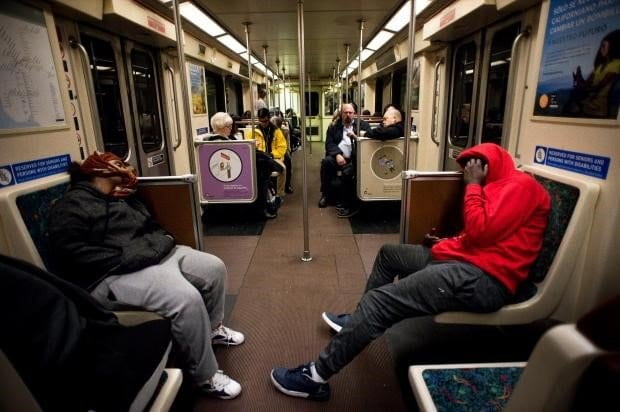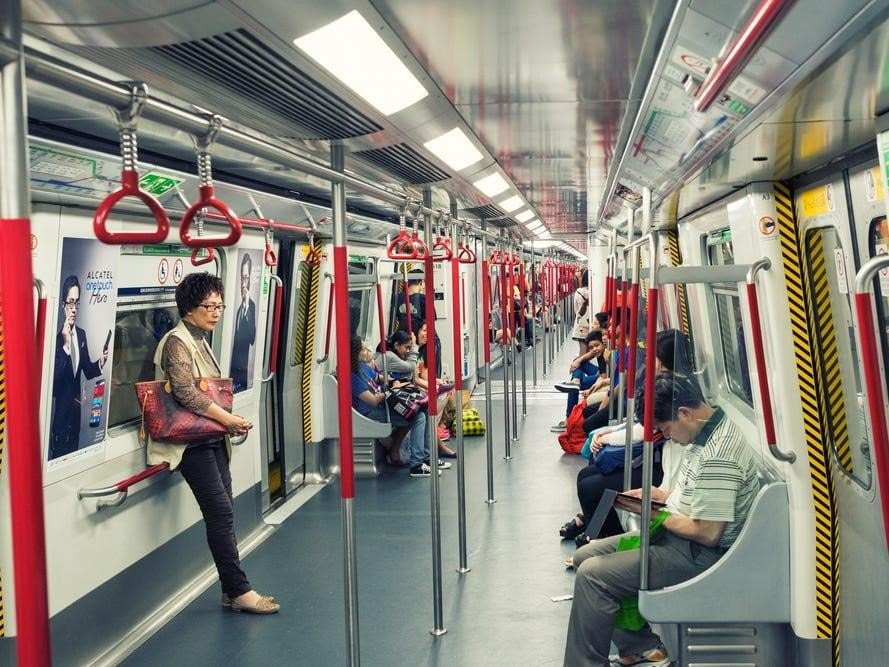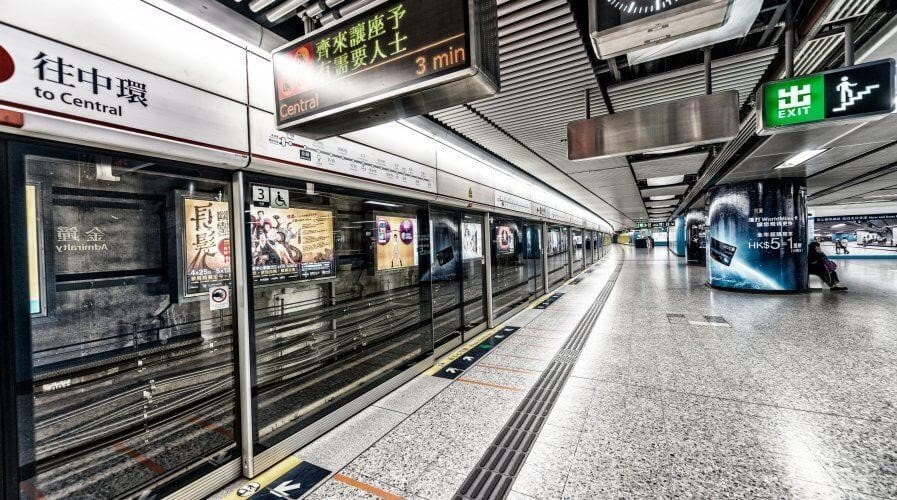By George Wong
During my younger years living in Hong Kong, I relied heavily on the highly developed and intricate public transit network for getting around the city. With more than 90% of the daily journeys taken on public transport, the majority of the population relies heavily on the transit system. In contrast to Hong Kong, only 15% of Los Angeles residents walk, bike, or use public transit to get to work [1]. However, since personal vehicles have contributed to a significant proportion of carbon emissions, it is important to have a highly efficient public transit system to reduce our reliance on cars and work towards a truly sustainable city. In addition, a better public transport system in Los Angeles can also reduce traffic congestion issues on the I-5, I-10, and I-405 freeways. As there are numerous geographical, social, and cultural reasons that contribute to this disparity in public transport usage between the two cities, I will explore these factors and show what can be learned from Hong Kong’s system to improve ridership in Los Angeles.
In the last ten years, transit use in Los Angeles has decreased drastically [2]. A study on falling transit ridership across southern California has cited several possible causes, such as a rise in private vehicle access and well-established car-friendly infrastructure for most regions. In addition, the quality of public transit is generally known to be subpar compared to other systems in the nation. Although LA Metro has improved its reliability by having better on-time performance, the service quality needs to be enhanced. If people feel unsafe or uncomfortable using public transit, ridership could fall despite increased accessibility and high efficiency. Though inconclusive, the rise of the homeless population after 2010 could be a reason for the perceived lack of safety in this transit system [2]. These push and pull factors may have encouraged residents to own a car rather than take public transit.

LA Metro. (Source)
Compared to LA Metro, the experience in MTR, Hong Kong’s underground rail network, is generally pleasant and smooth. With over 5 million riders taking public transit as a daily average, the MTR transport system serves to be one of the most profitable rail systems in the world [3]. At peak hours, the frequency of trains is 2 to 3 minutes, and during off-peak times, it is about 5 to 7 minutes. With numerous convenience stores and attractive exhibitions within the station, it reflects how popular and enjoyable it may be to take rides underground. Despite a crowded environment, it is common to observe many riders following basic rules, such as not littering and keeping voices relatively down. Unlike LA Metro where sometimes one can feel vigilant of their surroundings for safety, individuals taking the MTR do not seem to face such concerns. On the other hand, a push factor for a high proportion of public transit usage is due to expensive car ownership. With a high tax rate for registration and annual license fees, owning a car is notoriously difficult in this dense city, as cars are perceived to be a luxury good rather than a necessity [4].

Interior of Hong Kong’s MTR train. (Source)

Hong Kong MTR Station. (Source)
So how could Los Angeles improve its public transit use? Although improving the frequency of rides or extending the current network to areas with little access could be an effective method to reduce wait times and increase accessibility, there are other strategies that are less costly and could bring about a significant effect in the short term. Since a first impression can be lasting in a person’s mind, it is crucial to make sure that train and bus conditions are clean and properly disinfected. Although it is assumed police presence within stations can reduce crime, it is merely a temporary solution to the problem of transport safety. Having a consistent and frequent cleaning schedule would facilitate this, and it is definitely a cheaper option than building a whole new station. Upgrading amenities on the current system is also important, such as having Wi-Fi or charging access to improve the experience when riding the train. However, it is more difficult to come up with strategies to reduce private car usage, especially for households that already own one. In fact, it is challenging to persuade owners to give up their cars to share the same transport with others, given the deeply entrenched car culture within the region. Currently, the Los Angeles County Metropolitan Transportation Authority is planning to study the idea of congestion pricing, a road fee that London has adopted to reduce traffic [5,6]. With the upcoming ban of new gas-fueled cars by 2035, although a rise in the use of electric cars could reduce emissions, it does not help resolve heavy traffic congestions on major freeways [7]. Nonetheless, more public policies will need to be drafted and executed with better urban planning in the near future. Apart from infrastructure changes, it is also crucial to reframe the way the media talks about public transit by shifting its focus to how public transit can achieve better environmental and economical sustainability for the city.
References:
- “Not Everyone in Los Angeles Drives.” Institute for Transportation and Development Policy, 30 June 2020. https://www.itdp.org/2020/06/23/not-everyone-in-los-angeles-drives/#:~:text=This%20demonstrates%20that%20there%20are,transit%2C%20walking%2C%20or%20biking
- Manville, Michael, et al. “Falling Transit Ridership: California and Southern California – SCAG.” Falling Transit Ridership: California and Southern California, SCAG, Jan. 2018. https://scag.ca.gov/sites/main/files/file-attachments/its_scag_transit_ridership.pdf
- “Patronage Updates.” MTR > Patronage Updates https://www.mtr.com.hk/en/corporate/investor/patronage.php
- Transport Department – Guidelines for Importation and Registration of Motor Vehicle, 13 June 2022. https://www.td.gov.hk/en/public_services/licences_and_permits/vehicle_first_registration/guidelines_for_importation_and_registration_of_mot/
- Peters, Adele. “How Los Angeles Plans to Get Hundreds of Thousands of People out of Cars.” Fast Company, Fast Company, 27 Nov. 2019. https://www.fastcompany.com/90436610/how-los-angeles-plans-to-get-hundreds-of-thousands-of-people-out-of-cars
- Kunkle, Fredrick. “Analysis | Los Angeles, a City Built around Cars, Wants to Get Rid of Them with Tolls.” The Washington Post, WP Company, 17 Jan. 2020. https://www.washingtonpost.com/transportation/2019/01/23/los-angeles-city-built-around-cars-wants-get-rid-them-with-tolls/
- Becker, Rachel. “Clean-Car Rules: California Unveils Proposed Measure to Ban New Gasoline-Fueled Cars.” CalMatters, 13 Apr. 2022. https://calmatters.org/environment/2022/04/california-electric-cars-rule-zero-emissions/
George is part of the 2020 INFEWS cohort and a PhD student in the Chemistry & Biochemistry Department at UCLA. His research focuses on redox switchable catalysis for the synthesis of biodegradable, block copolymers.
The blog is part of the INFEWS Social Media Series.
